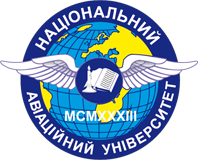THE PROBLEM OF AUTHORSHIP AND THE ETHICS OF USING ARTIFICIAL INTELLIGENCE TO CREATE VISUAL WORKS
DOI:
https://doi.org/10.32782/uad.2024.2.15Keywords:
artificial intelligence, generative models, copyright, ethics, anthropomorphization, datasets, artAbstract
The article examines a complex set of issues related to the authorship and ethics of using generative models of artificial intelligence for creating visual works. It explores the functioning principles of leading platforms such as DALL-E, Midjourney, and Stable Diffusion, which allow generating high-quality images based on textual descriptions. Particular attention is paid to the formation of large-scale datasets used to train these models. It is noted that such datasets, particularly LAION-5B, often contain millions of works by real artists, included without their explicit consent and proper compensation. This raises a number of ethical and legal issues, as artists and photographers may consider such use of their works as a violation of their copyrights for reproduction, distribution, and processing of the works. Other problematic aspects are also highlighted, including the potential devaluation of original creativity in the context of AI technology development and the risks of creating offensive or harmful content by algorithms that reproduce biases present in the training data. It is noted that these issues are the subject of active discussions and legal disputes, which may have far-reaching implications for AI regulation and intellectual property protection. Special attention is given to the psychological aspect of the problem, namely the impact of AI anthropomorphization on the perception of responsibility. Studies show that attributing human qualities to AI can shift the distribution of responsibility between the algorithm and the user, blurring ethical boundaries. The article proposes possible ways to reconcile the interests of various parties, such as creating compensation funds for artists whose works are used in AI, developing standardized licenses, adapting legislation, and implementing technological solutions for ensuring transparency and control. The need for an interdisciplinary dialogue involving artists, developers, lawyers, and other stakeholders is emphasized in order to develop balanced solutions that will allow unlocking the potential of generative AI models in art while respecting the rights and interests of creators and society.
References
Who gets credit for ai-generated art? / Z. Epstein et al. IScience. 2020. Vol. 23, no. 9. P. 101515. URL: https://doi.org/10.1016/j.isci.2020.101515 (дата звернення: 19.05.2024).
Jerrentrup M. Imagine art: the status of works generated by artificial intelligence. International journal of cultural studies. 2024. URL: https://doi.org/10.1177/13678779241252664 (дата звернення: 19.05.2024).
Vesala J. Developing artificial intelligence-based content creation: are EU copyright and antitrust law fit for purpose?. IIC – international review of intellectual property and competition law. 2023. URL: https://doi.org/10.1007/s40319-023-01301-2 (дата звернення: 19.05.2024).
Midjourney terms of service. Midjourney Documentation and User Guide. URL: https://docs.midjourney.com/docs/terms-of-service (дата звернення: 19.05.2024).
Terms of use – stability AI. Stability AI. URL: https://stability.ai/terms-of-use (дата звернення: 19.05.2024).
Are the images generated by openai dalle commercially available and who owns the copyright? – Microsoft Q&A. Microsoft Learn: Build skills that open doors in your career. URL: https://learn.microsoft.com/en-us/answers/questions/1481991/are-the-images-generated-by-openai-dalle-commercia (дата звернення: 19.05.2024).
Голубенко О. І., Підмогильний О. О. Generative pre-trained transformer 3. ITSynergy. 2022. No. 2.
P. 19–27. URL: https://doi.org/10.53920/its-2022-2-2 (дата звернення: 19.05.2024).
Midjourney. URL: http://www.midjourney.com (дата звернення: 19.05.2024).
Stability AI. URL: https://stability.ai/ (дата звернення: 19.05.2024).
Laion-5b: a new era of open large-scale multi-modal datasets | laion. LAION. URL: https://laion.ai/blog/laion-5b/ (дата звернення: 19.05.2024).
Homepage – creative commons. Creative Commons. URL: https://creativecommons.org/ (дата звернення: 19.05.2024).
DeepLearning.AI. The story of LAION, the dataset behind stable diffusion. The Story of LAION, the Dataset Behind Stable Diffusion. URL: https://www.deeplearning.ai/the-batch/the-story-of-laion-the-datasetbehind-stable-diffusion/ (дата звернення: 19.05.2024).
Stability AI, Midjourney should face artists’ copyright case, judge says. Reuters. URL: https://www.reuters.com/legal/litigation/stability-ai-midjourney-should-face-artists-copyright-case-judgesays-2024-05-08/ (дата звернення: 19.05.2024).
Wilkins A. Microsoft’s Copilot code tool faces the first big AI copyright lawsuit. New Scientist. URL: https://www.newscientist.com/article/2346217-microsofts-copilot-code-tool-faces-the-first-big-ai-copyrightlawsuit/(дата звернення: 19.05.2024).
WikiArt.org – visual art encyclopedia. www.wikiart.org. URL: https://www.wikiart.org/en/about (дата звернення: 19.05.2024).
McKay C. UK court advances getty’s copyright suit against stability AI: a deep dive into the legal battle. Maginative. URL: https://www.maginative.com/article/uk-court-advances-gettys-copyright-suitagainst-stability-ai-a-deep-dive-into-the-legal-battle/ (дата звернення: 19.05.2024).
EU says generative AI makers must declare copyrighted content. Tech Monitor. URL: https://techmonitor.ai/technology/ai-and-automation/generative-ai-european-union-eu-copyright (дата звернення: 19.05.2024).
Lovato J. Foregrounding artist opinions: A survey study on transparency, ownership, and fairness in AI generative art. Arxiv: computers and society. URL: https://doi.org/10.48550/arXiv.2401.15497.








